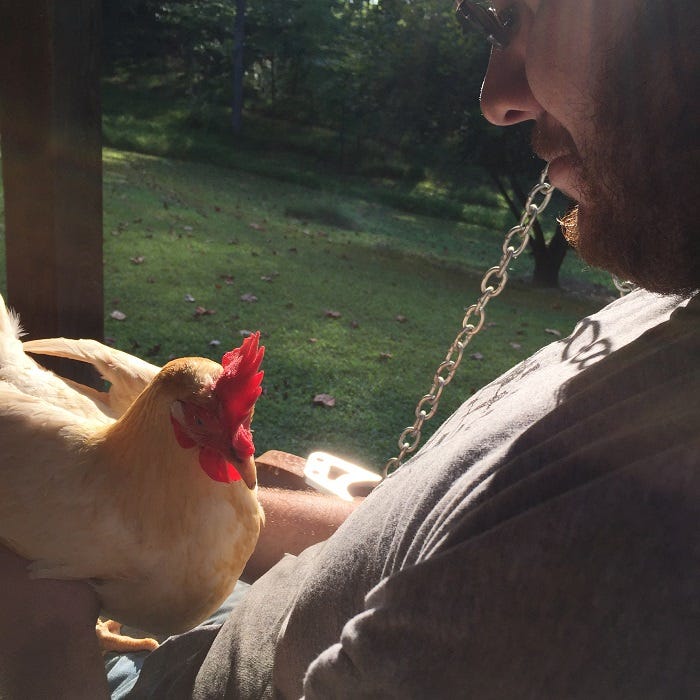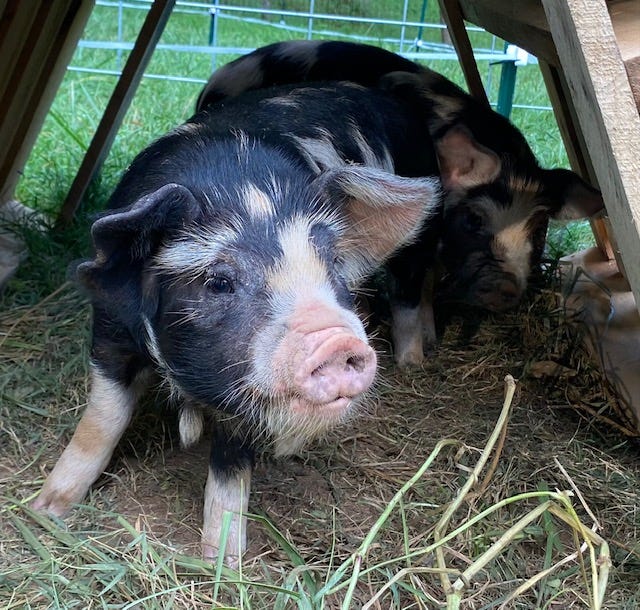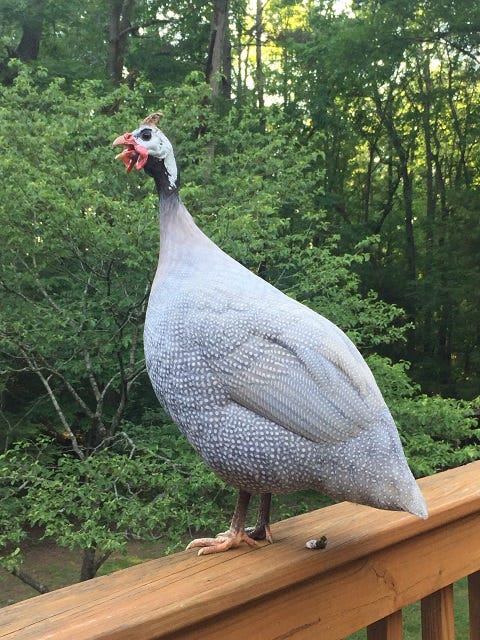8 factors to help choose livestock that fit your life
How do you decide which animals to add to your homestead?
Routine school field trips and family outings from my childhood growing up on Long Island included visits to the Holtsville Wildlife & Ecology Center. My most distinct memories from these visits include learning to milk a cow, churn butter, and the most vivid memory of all: The smell of cow manure. I remember sitting on a school bus pulling up to the ecology center and saying how much I loved the smell when all of the other kids were holding their noses. To this day, I love the aromas when driving past pastures of grazing cows. I haven’t met anyone else with this shared scent appreciation.
I think about this when I consider which livestock I’d like to raise. It’s a dream of mine to have a cow someday. I tell my husband that I don’t want to raise a cow for the first time in my 60s or my 50s, so we better get plans in place. Depending on the breed of cow, some farms have long waitlists. For my purposes, and depending on the age of the cow, it’s a multi-year commitment. Timing plays into my considerations for this particular livestock, but the main areas that I start with are property and infrastructure.
Goals. While property is a factor, picking livestock for your homestead or hobby farm comes down to your goals. Are you interested in raising livestock for competitions, entertainment, food, or labor needs? I’d love to have a horse, but it would just be for fun and riding. Right now my goal with any new livestock is that they need to serve a purpose. Yes, I could find a draft horse to plow or pull wagons, but I don’t have huge needs in those areas. Your unique intentions will influence the animal choices that best fit your life.
Property. When considering your property, is it small or big, full of fresh pasture, woodland space, rocky terrain, equipped with a barn and fencing? Don’t immediately eliminate certain animals based on property size. Our Australian shepherd came from a homestead that has raised pigs, goats, turkey, geese, rabbits, and chickens simultaneously with intensive rotational grazing on just more than 1 acre—not to mention their Aussie pack, which now hovers at 10 dogs. I also know of some people who are in apartments, townhomes, or homes with small properties and raise quail indoors. (ICYMI, check out my series about raising quail.) Rocky terrain may be better suited for goats. Depending on your location, you may be able to raise cows outside year-round, so pasture or woodland space with silvopasture potential could work.
Timing and grow out. If you choose livestock for meat purposes, breed choice will affect time commitments. For instance, a Mangalitsa pig will take more than a year to grow out, whereas an Idaho Pasture Pig can be butcher-ready in 8 months. Cornish Cross hens are processed in under 2 months, but heritage breeds can take 5 months or more to reach the right size. If you’re not breeding your own stock, the nice thing is that your time commitment and labor has a clear end, and you can structure seasonal work around the time you have the animals. If you’re breeding your own stock, you might have perpetual obligations that swell seasonally. For instance, I have quail year-round but I only hatch out in the summer. Nine months out of the year I have no incubator or brooder to maintain or clean.
Consumption size and preferences. You could put 2 different families on the same property and they may utilize the land in completely different ways. We each have our own food preferences, values, and goals. One of the farms I follow that I learn so much from is From Scratch Farmstead. With a family of six, they have dramatically different consumption needs than our family of two. Aside from size, personal preferences factor in. I love having a variety of food choices, as I’ve shared in recent posts. I’ve considered adding an aquaponics setup to raise my own fish, dairy goats to produce my own milk, and sheep for dairy and/or meat. I haven’t prioritized any of these because fish only make up 2 or 3 meals per month for us—is that worth having an entire family fish farm for ourselves? Not really, especially when I enjoy fishing in mountain streams and lakes. We also only consume a half gallon of milk per week at most—is it worth caring for livestock that produce a ½ gallon or more per day? I don’t think so. If we had fenced pastures and a barn, I would be more inclined to try it out, but going to the expense and effort of adding a shelter and fencing doesn’t seem like a logical fit relative to the amount we would consume.
Sourcing and trade. Earlier this year I traded some quail eggs for duck eggs. The person who acquired my quail eggs hatched them out and has his own covey now. Instead of hatching out ducks, I used the duck eggs to make the most incredible frozen custard I’ve ever made and had. Knowing that I have a duck egg source, is it worth raising ducks if I can trade for eggs that I only want seasonally? Or would I have some uses for ducks in managing pests around our property and improving soil health? Those are some things I’m thinking about. Based on your goals and livestock needs, you might order from a hatchery, source from a local feed store, ask a friend if they’ll trade animals, or find registered breeders. If you’re specifically interested in raising heritage breeds, check out The Livestock Conservancy. They’re actually based in the town where I live and offer microgrants up to $2,000 to people raising heritage breeds. You can use the funding for agritourism, processing equipment, marketing, or infrastructure build-outs or upgrades.
The trifecta: fencing, housing, and utilities. Speaking of infrastructure, lack of fencing, water, electric, and shelter don’t necessarily need to deter you from managing livestock. Mobile fencing works for chickens, goats, sheep, pigs, and cows. Some spartan moveable shelters can be made from found or free materials. We acquired free pallets from local stores that get large deliveries. You could arrange those a number of ways to make A-frame, 3-sided, or temporary structures. Based on your climate, you might need to build a small barn or animal house for seasonal use. If parts of your property don’t have a water source, you could put water catchment systems in place, run irrigation, or use a hose or water cart seasonally. Electric can often be supported with solar options or even long extension cords. The solar-powered electric fence system that we built last year for our pigs ended up failing within the first month. The panel needed full, all-day sun, which was hard to sustain as we rotated the pigs to different parts of the property. Instead of worrying about the fence failing, I decided to use extension cords. Knowing that raising pigs had a specific end date made it easier for me to justify purchasing and moving an extension cord. If we were to have year-round livestock that needed mobile, electric fencing I would most likely look for a better solar solution. When considering infrastructure needs, take time to learn about livestock needs. A single cow can drink 30-to-50 gallons of water per day. That volume of hydration will require a different infrastructure than a few 2-gallon buckets that pigs may need daily. Fencing can also be animal-specific. Goats are notorious escape artists, so maybe you’ll need a perimeter fence in addition to a goat pen fence.
Travel intentions. I know some folks who swap animal care needs. A friend may farmsit for another friend, then they reciprocate. Whenever possible, we try and plan our travels in between livestock commitments, or try and squeeze in time less frequently when we have more livestock. For example, when we had our pigs this time last year, we were away every other weekend for a few days at a time and avoided being away for a week or more. Pigs needed daily visits and our petsitter costs $25 per visit. This cost us approximately $200 per month during our time with the pigs. These visits included checks on our other animals (chickens, quail, and my pet cockatiel was still alive at the time). However, when we only have layer chickens and quail, we can generally go away for 4 or 5 days and the animals have plenty of feed and water when we return.
Another option for avoiding the cost and stress of arranging animal care is to time the age and pickup of livestock (if for meat purposes), or plan your own breeding to time around your travel plans. From January through April this year I raised our first meat chickens. I planned a week-long trip that started the day after the chickens were processed. This approach worked so well that I’m trying to source our next livestock to follow a similar schedule next year.Cost. I would feel a little unsettled without mentioning budget. If you’re planning to raise livestock to show in competitions, you may be able to offset expenses through prize money or teaching courses about working in shows. Raising your own livestock from a breeding pair can save money long-term, but you’ll have year-round, ongoing expenses. If you’re raising chickens, you could also offset these costs through selling hatching eggs, eggs for eating, or chicks. I mentioned trading earlier for both livestock and products, but you could also trade infrastructure. Someone may be selling a mobile coop that you could offer a trade for. You could also offer skills or services based on your background in exchange for someone to install fence posts for you. The list of trade options is only limited by your creativity.
In thinking through all of these factors you might realize a certain livestock you have now or had at one time wasn’t the right fit. We had a guinea hen for a few years—not by our own choice—but it was an entertaining addition to the chicken flock. The guinea hen showed up randomly one day and claimed our flock of layer chickens as its harem. A few years later, it started to viciously and relentlessly attack some of our newer chickens. We needed to isolate the hens in dog crates to allow them to recover, but as soon as we released them, the guinea hen attacked until they were sore, bloodied lumps that needed isolation again. It was obvious this guinea hen wasn’t the right fit for our flock and we brought it to a nearby farm that had a roaming flock of guineas that they thought our bird would be a good fit for. Although we had grown sentimental about our guinea hen, it wasn’t the right fit. Could we have ordered some guinea hen eggs or picked up some keets at the feed store to create a separate flock for this raging guinea hen? Perhaps. But having a guinea hen wasn’t even our choice to begin with.
Funny thing is I’m on the fence about what animals to add next specifically because of fencing. I don’t want to invest in permanent fencing because I don’t want year-round, long-term livestock. I’m currently weighing the infrastructure costs and also the timing of livestock before I schedule an order or leave a deposit. As of this writing I’m reminding myself to embrace this time of minimal animal care. I have one more week of brooder time for quail chicks before moving them out to the quail cottage and cleaning and storing the brooder until next year. It’s a special time with stationery coops and low-maintenance animals. The official start of fall is still a few weeks away, but I’m already moving into a new season.






